Crime
NDLEA busts Mkpuru Mmiri labs in Lagos, Anambra, nabs 2 barons, 1 chemist
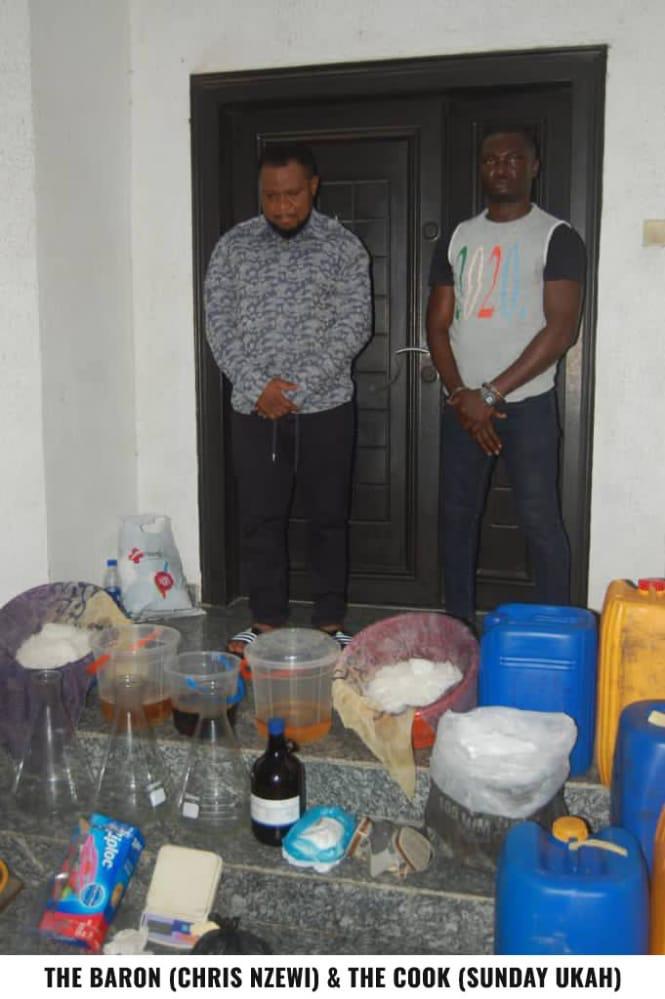
NDLEA busts Mkpuru Mmiri labs in Lagos, Anambra, nabs 2 barons, 1 chemist
By Michael Mike
The National Drug Law Enforcement Agency, NDLEA has busted two major clandestine laboratories in Lagos and Anambra state where dangerous illicit drug, crystal methamphetamine, called Mkpuru Mmiri in local parlance, were produced and from where they are distributed across the country and export outside the shores of Nigeria..
Chairman/Chief Executive of NDLEA, Brig. Gen. Buba Marwa (Retd) disclosed this on Tuesday 2nd August 2022 when he addressed the media on the development.
He said following the outbreak of crystal methamphetamine abuse in the last quarter of 2021, predominantly in the South East and the cry for help from many communities in the region because of the devastating effects the distribution and abuse of the dangerous stimulant drug were having on their youths and others, the agency deployed all available assets to find the primary source of manufacturing of the drug in Nigeria and arrest the barons behind it and dismantled their rings.
Marwa said while efforts in the past seven months against the cartel behind the methamphetamine scourge, have led to the arrest of four kingpins and a cook; “now, we have added two barons and another cook. This no doubt is a loud statement to those involved in the criminal illicit drug trade that it’s time for them to quit or risk losing it all; that is losing their freedom, investment and assets acquired through proceeds from the illegal business.”
The anti-narcotics czar, said: “I am pleased to inform the public today that, after months of painstaking intelligence gathering, diligent tracking and coordinated offensive action, we recorded a breakthrough on Saturday, July 30, 2022, when officers and men of the agency successfully busted two methamphetamine manufacturing facilities, called Meth Laboratories.
“The first one, located in Victoria Garden City (VGC) Estate of Lekki, Lagos, is owned by a baron, Chris Emeka Nzewi, while the second, in Nise Community of Awka South Local Government Area of Anambra State was owned by Paul Ozoemenam. The owners of these two illicit meth laboratories were successfully arrested alongside Sunday Ukah from Aba, Abia State, the cook or chemist that produced the drugs for them.
“The laboratory in Lagos was set up inside the Boys’ Quarter building of a four-bedroom duplex. From there, we recovered a total of 258.74 kilogrammes of crystal methamphetamine and various precursor chemicals used for the production of the toxic drug. The complete paraphernalia of laboratory equipment such as gas cylinders, giant gas burners, industrial face masks, industrial gloves, tubes and flat-bottomed conical flasks, among others were also found.”
He said he’s addressing the public about the weekend busts to raise people’s awareness of the danger that meth production constitutes to public health and the modus operandi of the barons involved in the unwholesome activity.
Marwa revealed that: “The owner of the laboratory in VGC, for instance, was producing this highly unstable and toxic drug in a house where he lived with his family. This speaks volumes about his insensitivity to the consequences of exposing his family, which includes a three-month old baby, to the danger of hazardous chemicals. If that is the case, that is an indication that public health was of no concern to him.
“In this particular case, aside from the laboratory being close to the kitchen of the main house, the waste from the laboratory was channelled into the septic tank and soakaway in the compound, with a high risk of contamination of the water table of the entire neighbourhood.
“On average, the lab produced 50 kilos of methamphetamine every week with plans underway to increase the capacity of production to at least 100 kilogrammes per week. Where do these drugs end? From our preliminary interrogation, we now know the drugs from this lab were both for export and local consumption. We also know there is a supply chain of distributors and buyers for export and the domestic market.”
He noted that: “When you consider the fact that the price of this dangerous drug was going for as high as US500,000 per kilo in the international market in recent time, you will understand why Nzewi cared less to put the lives of his own family at risk by producing this in the same house where they live. Hence, taking these two labs out of operation is a major feat in our continuing effort to curb the meth problem.”
The NDLEA boss said the lab busts also exposed the interconnectivity among syndicates involved in meth production, adding that the cook was hired by both producers to produce for the VGC lab, as well as the lab in Anambra.
He urged members of the public to be sensitive to their environment. “As we step up the offensive against drug traffickers, we want the public to be more vigilant and be aware of the fact that producers of methamphetamine always choose unsuspecting environments with tight security, like the VGC estate, in this case. And the reason is not far-fetched: They choose secured estates to prevent law enforcement agents from monitoring their activities. They also locate meth labs in remote unsuspecting communities where residents would not be aware of their activities.
“It is very important to note that the waste from methamphetamine production is dangerous to the ecosystem. The chemicals are toxic and once they seep into the soil, they contaminate the water table from which surrounding wells and boreholes draw their water. And citizens who unwittingly consume the water from such sources are exposed to heart and kidney ailments and other organ diseases. Neighbours, too, who inhale gases from the lab, are also susceptible to the same risk. What makes it worse is that the production usually takes place in the middle of the night, between 11 pm and 4 am, and therefore, unsuspecting neighbours could have been exposed to the hazards for months or even years.”
Marwa commended the professionalism of the intelligence led special units assigned the task. He said: “Our forensic experts and the 200-man strike force team that we deployed who were the operational arm that executed the mission of dismantling the labs, seizing the crystal meth, precursors, paraphernalia and arresting the culprits.”
Crime
Troops rescue kidnapped woman in Taraba
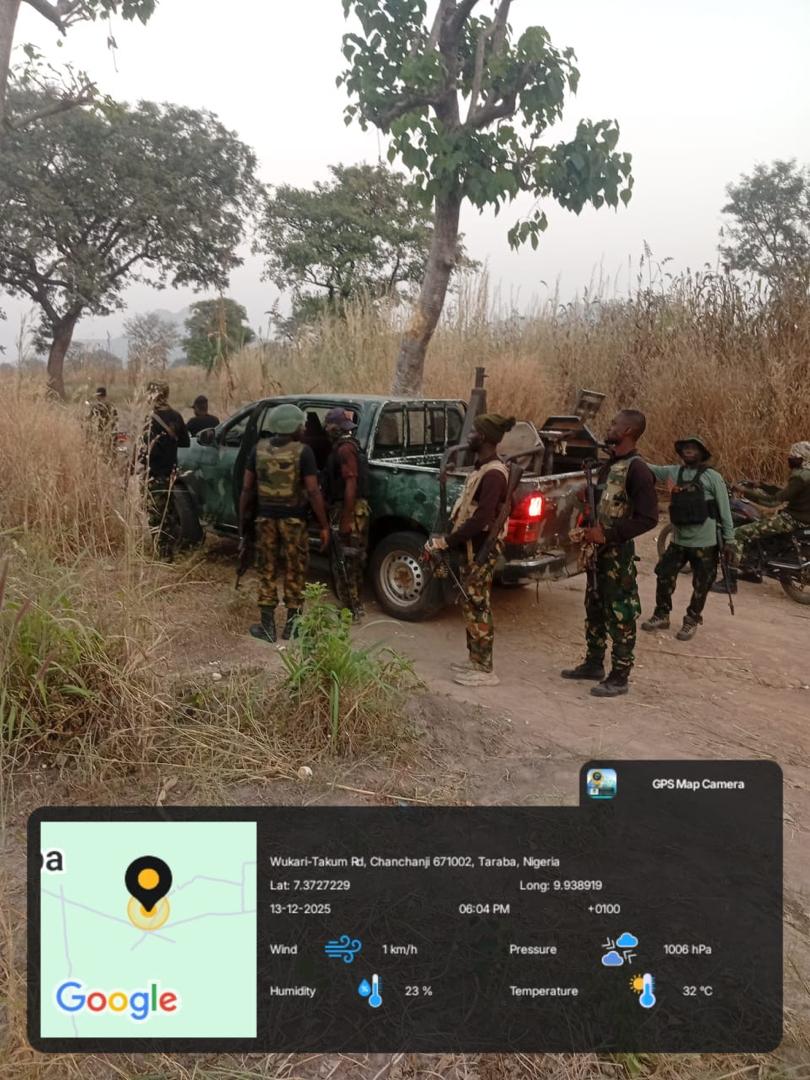
Troops rescue kidnapped woman in Taraba
By: Zagazola Makama
Troops of Sub-Sector 3B, Operation Whirl Stroke (OPWS), have rescued a kidnapped woman during a search-and-rescue operation in Takum Local Government Area of Taraba.
Sources told Zagazola Makama that the troops, deployed at Kufai Amadu in Takum LGA, received information at about 1:13 p.m. on Friday about a kidnapping incident at Torikegha village, Chanchanji Ward.
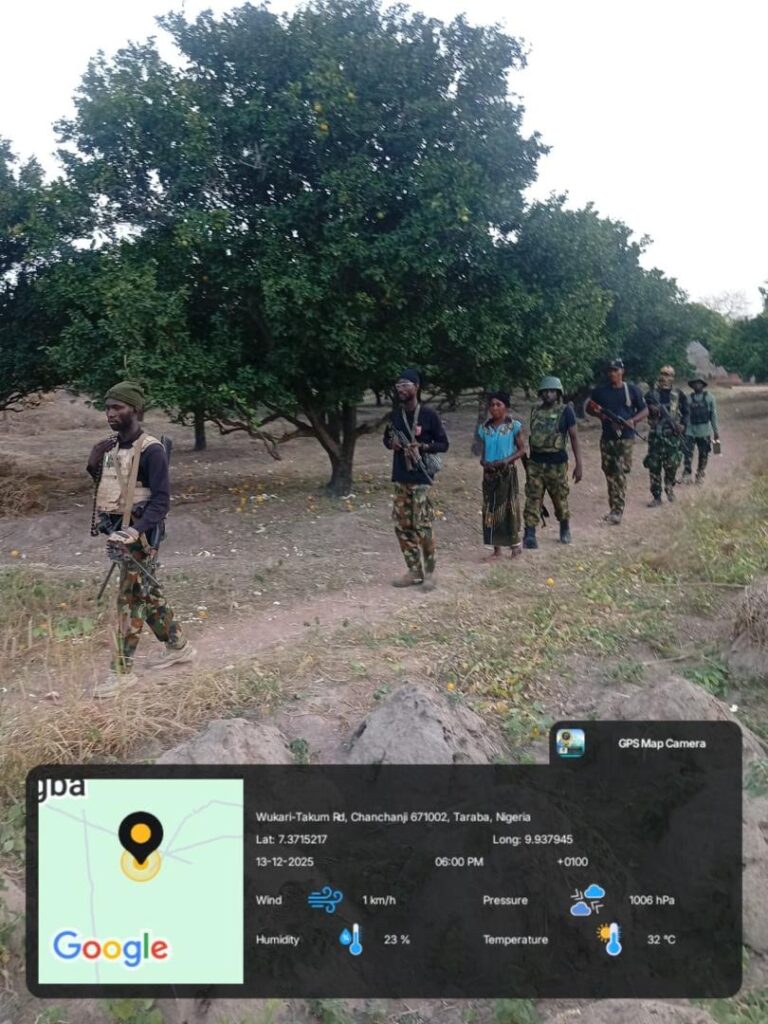
The source said the troops immediately moved to the village, where they were informed that the victim, Mrs Iloda Ayinba, a resident of Torikegha, had been abducted while on her way to her farm by suspected herdsmen relocating from the area.
According to the source, the troops pursued the suspects along their withdrawal route and conducted an extensive combing of the general area up to the power line corridor between Benue and Taraba states.
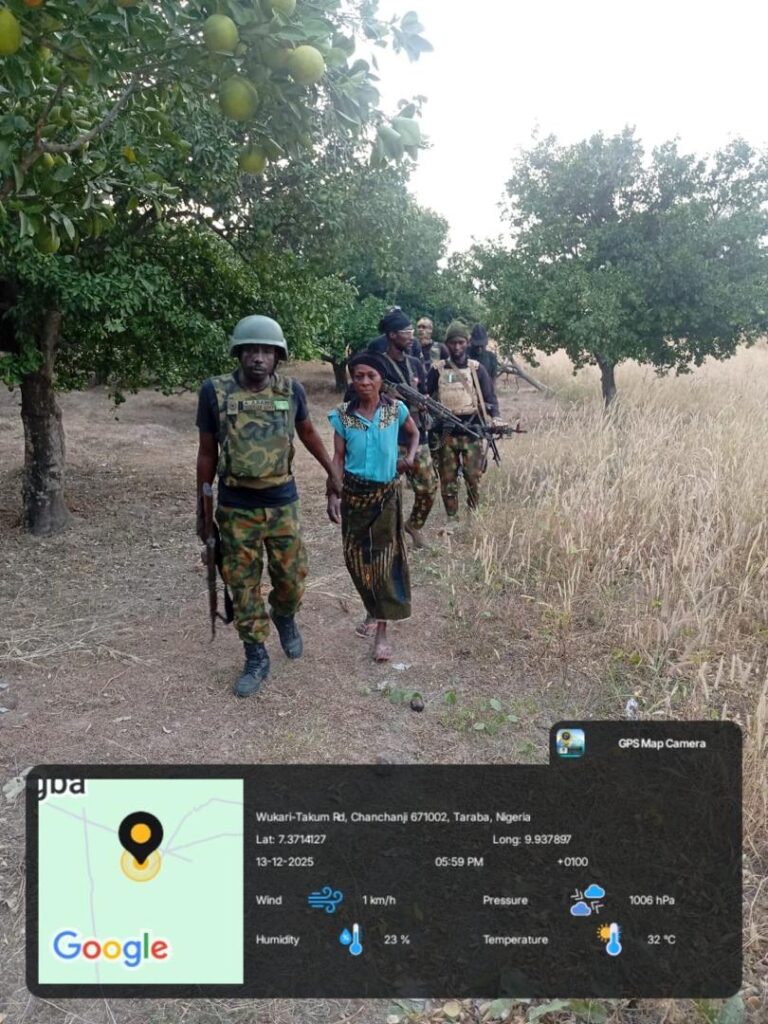
“Following the aggressive and robust search-and-rescue operation, the kidnappers abandoned the victim in the bush and fled,” the source said.
The troops subsequently rescued the woman, while no contact was made with the suspects during the exploitation of the area, the source added.
Troops rescue kidnapped woman in Taraba
Crime
Four children killed in Barkin Ladi reprisal attack as Plateau tensions escalate

Four children killed in Barkin Ladi reprisal attack as Plateau tensions escalate
By: Zagazola Makama
Four children were killed on Thursday in a reprisal attack allegedly carried out by armed Fulani herdsmen in Dorong village, Foron District of Barkin Ladi Local Government Area of Plateau State, amid rising tensions following recent attacks on herders and cattle rustling in the area.
The victims were identified as Precious Joshuah, 17; Isa’ac Joshuah, 9; Mary Joshuah, 7; and Eve Sambo, 3.
Sources told Zagazola Makama that the attack occurred less than 48 hours after coordinated assaults on pastoral communities in Barkin Ladi, Jos East and Riyom LGAs, during which no fewer than 168 cattle were rustled and several others poisoned.
Zagazola reports that on Wednesday evening, Militia from plateau rustled 137 cattle around Nding community in Fan District of Barkin Ladi LGA, while another 34 cattle were driven away from Kukukah community in Jos East LGA, with only three later returning.
Less than 24 hours later, nine cows reportedly died after grazing on poisoned substances around Kwi village in Riyom LGA, further heightening tension across the affected areas.
A community leader in Foron District, who spoke on condition of anonymity, said the Dorong attack was carried out in the early hours of Thursday.
“The atmosphere has been tense since the cattle rustling incidents. People have been living in fear, warning that reprisals were imminent if nothing was done. Sadly, those fears have now materialised,” the source said.
Security sources confirmed the incident, adding that troops and other security operatives had been deployed to the area to prevent further escalation and restore calm.
We therefore renewed calls on the Plateau State Government and concerned security agencies to urgently intervene, arrest perpetrators on all sides, and address the underlying causes of the recurring violence.
Zagazola warned that without decisive action, including accountability for cattle rustling, livestock poisoning and retaliatory attacks, Plateau State risks sinking deeper into another cycle of reprisals that continues to claim innocent lives, particularly women and children.
As of the time of filing this report, authorities were yet to issue an official statement on the Dorong incident.
Four children killed in Barkin Ladi reprisal attack as Plateau tensions escalate
Crime
Troops neutralise three suspected kidnappers in Kaduna
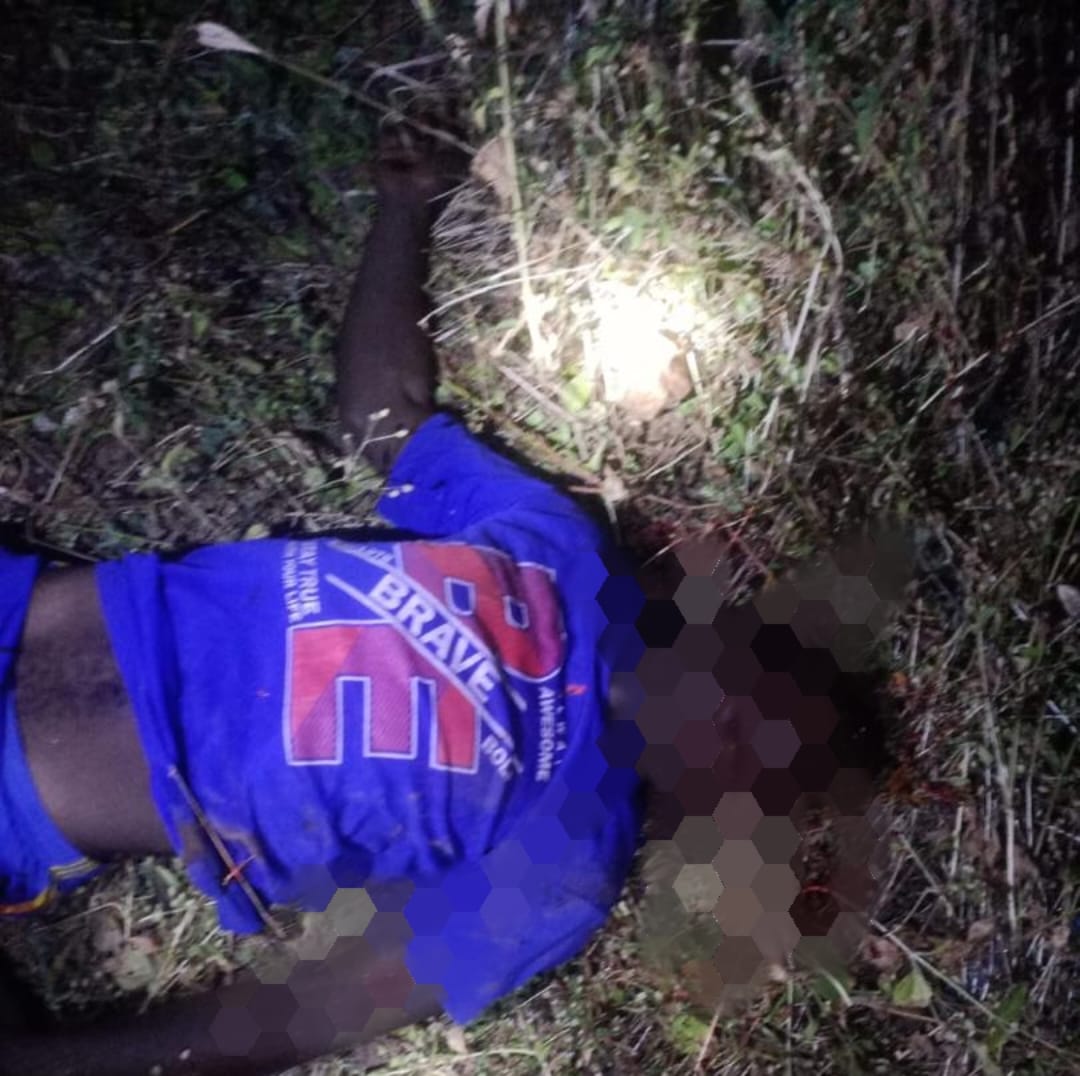
Troops neutralise three suspected kidnappers in Kaduna
By: Zagazola Makama
Troops of the Joint Task Force Operation Enduring Peace have neutralised three suspected kidnappers during a raid on their hideout in Bakin Kogi, Jema’a Local Government Area of Kaduna State.
Zagazola gathered the operation, carried out on 11 December, was part of intensified efforts to clear criminal elements from the Joint Operations Area ahead of the yuletide celebrations.
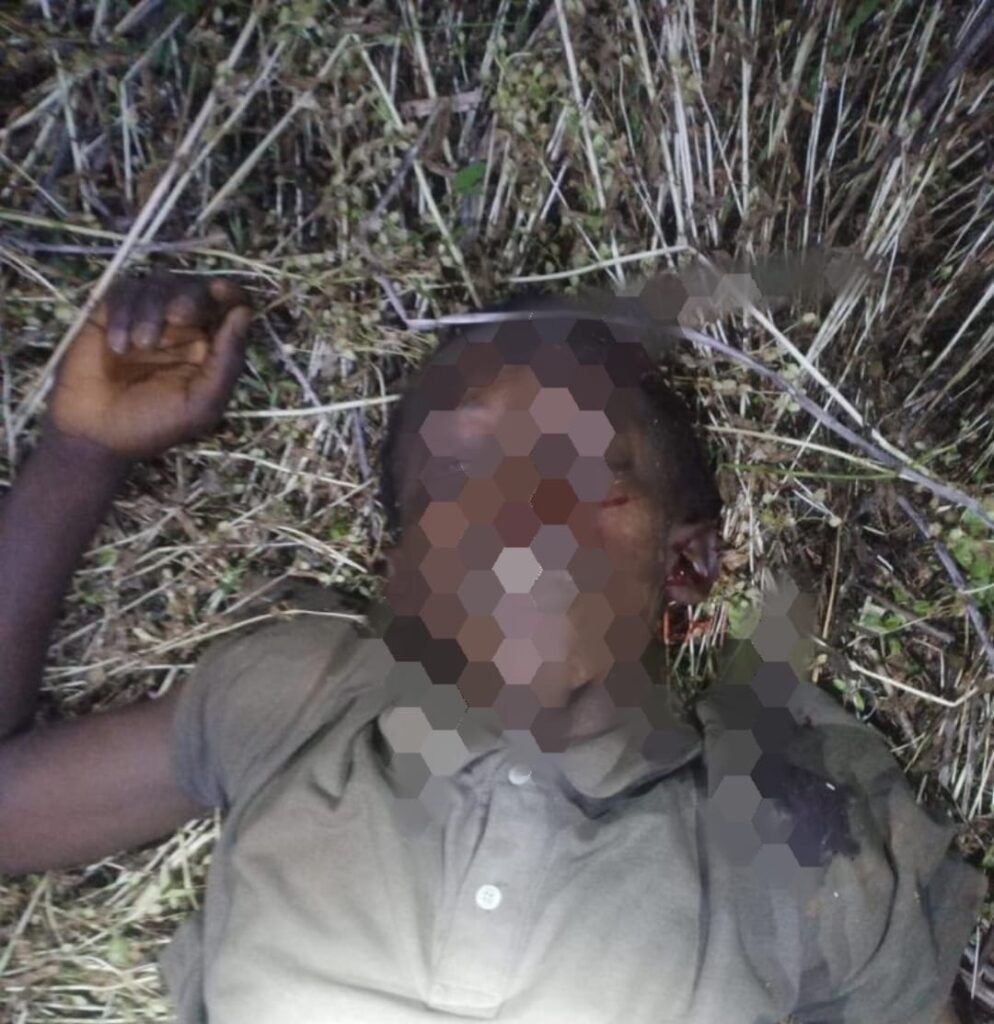
The troops came under fire as they approached the hideout, but responded with superior firepower, overwhelming the armed gang.
Sources said the troops later conducted a sweep of the area and discovered the corpses of three suspected kidnappers neutralised during the exchange.
According to the source, the suspects were identified as members of a notorious syndicate responsible for multiple abductions and attacks on commuters along the Dangoma–Godogodo axis of Jema’a LGA.
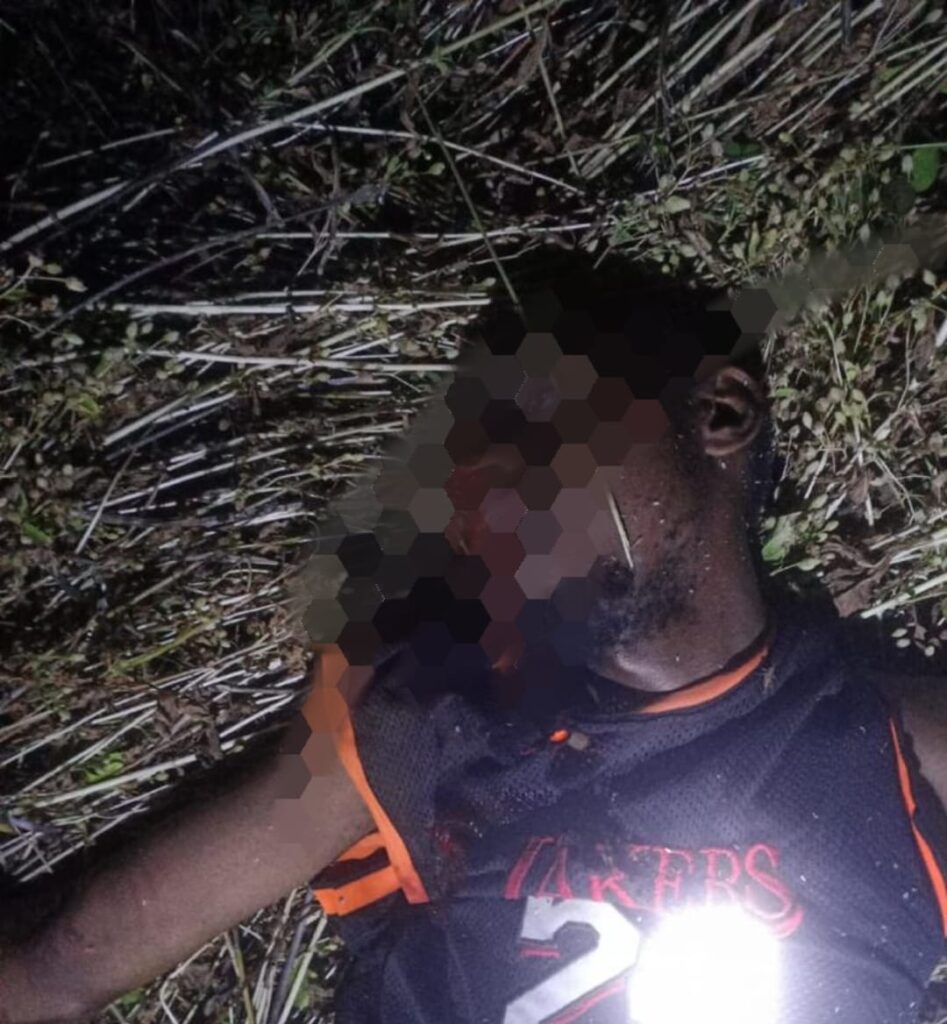
He added that troops had launched follow-up operations to track down fleeing members of the group and dismantle their remaining networks.
The operation, he said, reflected the military’s sustained push to enhance security within Kaduna State and neighbouring areas.
Troops neutralise three suspected kidnappers in Kaduna
-

 News2 years ago
News2 years agoRoger Federer’s Shock as DNA Results Reveal Myla and Charlene Are Not His Biological Children
-

 Opinions4 years ago
Opinions4 years agoTHE PLIGHT OF FARIDA
-

 News8 months ago
News8 months agoFAILED COUP IN BURKINA FASO: HOW TRAORÉ NARROWLY ESCAPED ASSASSINATION PLOT AMID FOREIGN INTERFERENCE CLAIMS
-

 Opinions4 years ago
Opinions4 years agoPOLICE CHARGE ROOMS, A MINTING PRESS
-
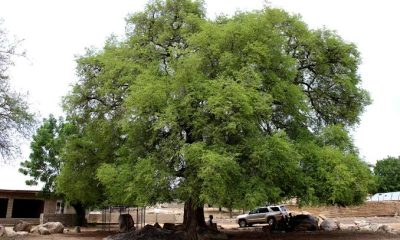
 News2 years ago
News2 years agoEYN: Rev. Billi, Distortion of History, and The Living Tamarind Tree
-

 ACADEMICS2 years ago
ACADEMICS2 years agoA History of Biu” (2015) and The Lingering Bura-Pabir Question (1)
-
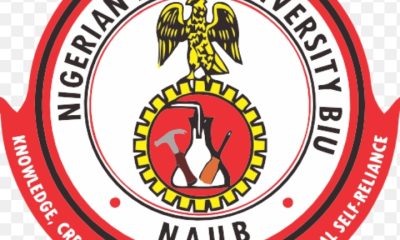
 Columns2 years ago
Columns2 years agoArmy University Biu: There is certain interest, but certainly not from Borno.
-

 Opinions2 years ago
Opinions2 years agoTinubu,Shettima: The epidemic of economic, insecurity in Nigeria





